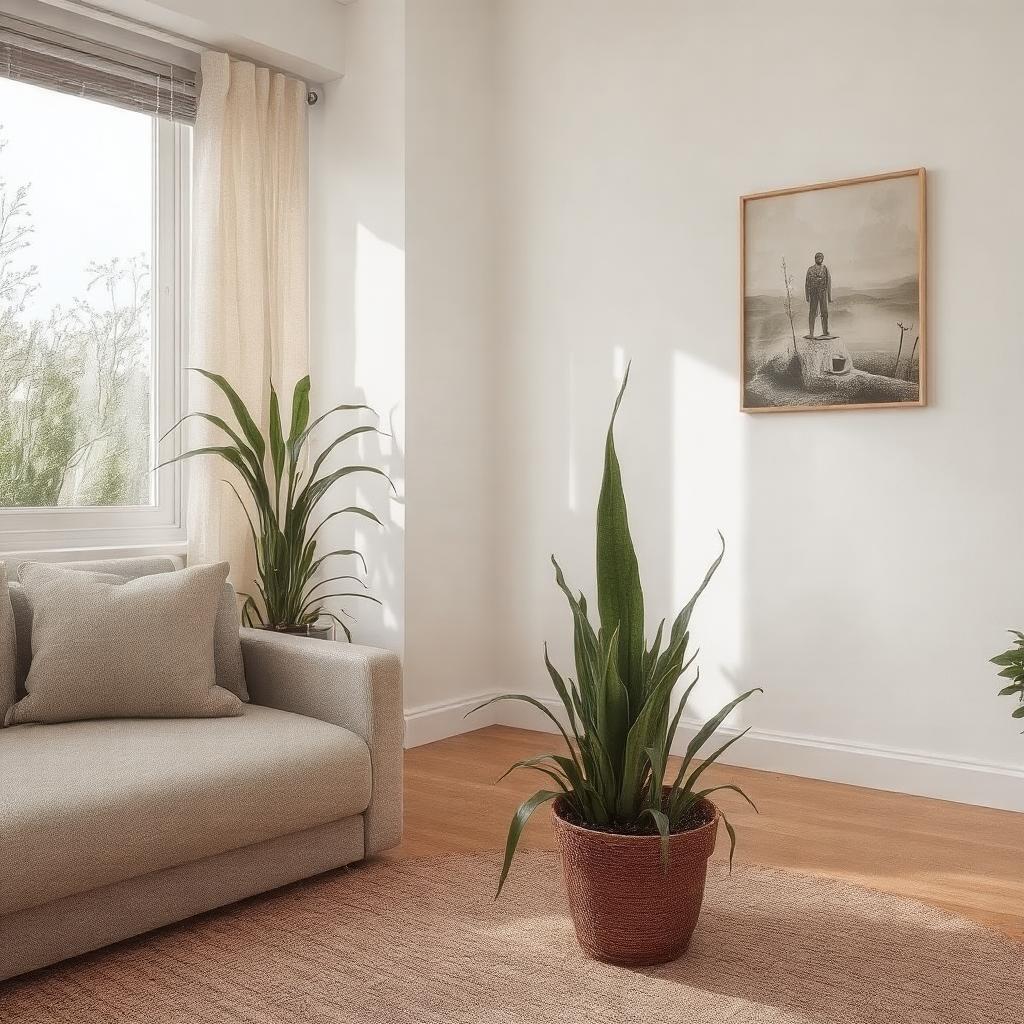Introduction
Indoor plants are not just pretty to look at—they can actually help improve the environment in your home. With increasing concerns about sustainability, many people are adding houseplants to their homes to contribute to a greener lifestyle. These plants can clean the air, reduce energy usage, and even help fight climate change.
In this post, we’ll look at how indoor plants benefit the environment by purifying the air, saving energy, and cutting down on carbon footprints. We’ll also share some tips on how to choose and care for houseplants to make the most of these environmental benefits. Whether you’re new to plants or an experienced plant lover, this guide will help you understand the positive effects of houseplants on the environment.
1. How Indoor Plants Improve Air Quality
Indoor air can sometimes be more polluted than outdoor air, with harmful chemicals like formaldehyde and benzene coming from furniture, cleaning products, and even paints. These chemicals can harm our health over time. But did you know that houseplants can help clean the air?
The NASA Clean Air Study, which was done in 1989, showed that certain indoor plants can remove harmful chemicals from the air. Plants like the Spider Plant, Peace Lily, and Snake Plant are great at absorbing toxins and releasing fresh oxygen. This makes them perfect for improving air quality in your home.
While houseplants do help with air purification, it’s important to note that they’re not a complete replacement for good ventilation or air filters. But having a few plants in your home can definitely improve the air you breathe, especially in rooms that may have poor ventilation.
2. Indoor Plants and Energy Efficiency
Indoor plants don’t just improve the air—they can also help save energy. Plants have the ability to influence the humidity and temperature of a room, creating a more comfortable environment. This can reduce the need for air conditioning in the summer or heating in the winter, helping you cut down on your energy usage.
For example, plants like Aloe Vera and English Ivy can act as natural humidity regulators, making rooms feel cooler and fresher in hot weather. In colder months, indoor plants can help maintain a more stable temperature by adding moisture to the air, reducing the need for humidifiers or heaters.
While you may not be able to rely solely on plants to replace all your heating and cooling systems, adding the right plants to your space can reduce your energy consumption and lower your utility bills.

3. The Role of Houseplants in Carbon Sequestration
Carbon sequestration is the process by which plants absorb carbon dioxide (CO2) from the air during photosynthesis. This is a vital process that helps reduce the amount of CO2, a major greenhouse gas, in our atmosphere. While outdoor plants and trees have a much larger role in absorbing CO2, indoor plants can still contribute, though on a smaller scale.
Houseplants like the Areca Palm and Rubber Plant absorb CO2 and release oxygen, but the amount they sequester is limited compared to the vast carbon storage capabilities of large outdoor forests. However, having indoor plants can be seen as a small but positive step in reducing your overall carbon footprint. They also help improve the indoor air quality by absorbing pollutants, contributing to a healthier and more sustainable environment.
By choosing houseplants, you’re adding to the global effort of reducing carbon emissions, even if it’s in a small way. So, while indoor plants won’t save the planet on their own, they are part of a broader eco-friendly lifestyle that contributes to sustainability.
4. Sustainability Factors: Sourcing, Cultivation, and Transportation
While houseplants offer environmental benefits, their overall sustainability also depends on how they are grown, sourced, and transported. Here are some key factors to consider:
- Local Sourcing: Buying plants that are locally grown can significantly reduce their environmental impact. Plants that travel long distances by truck or plane have a higher carbon footprint due to transportation. Opting for local or regional nurseries helps support local businesses and reduces transportation emissions.
- Organic Growing Practices: Look for plants that are grown organically, meaning they’re not treated with harmful pesticides or chemicals. These plants are not only safer for your health but also better for the environment, as they don’t contribute to soil and water pollution.
- Avoiding Overconsumption: Over-buying plants or opting for exotic varieties that require special care can lead to waste. Make sure to choose plants that are easy to maintain and suitable for your indoor environment, reducing the chance of them dying or needing to be replaced too often.
- Eco-friendly Containers: Don’t forget about the pots your plants come in! Choosing biodegradable or recyclable pots can make a difference in reducing waste.
By being mindful of how and where you purchase your plants, you can make a more sustainable choice that aligns with your eco-friendly lifestyle.
Conclusion
Indoor plants are more than just a decorative addition to your home—they’re small but powerful contributors to improve air quality. From improving air quality and energy efficiency to helping with carbon sequestration, houseplants offer a variety of environmental benefits. However, their positive impact can be further enhanced by choosing locally sourced, organically grown plants and caring for them responsibly.
By integrating indoor plants into your space, you’re not only creating a healthier environment for yourself but also making a small contribution to a more sustainable world. Whether you’re a plant enthusiast or just getting started, consider these tips to maximize the eco-friendly potential of your houseplants and enjoy their benefits for years to come.


